Living undergroundInhabitants of Cappadocia, since Neolithic Age, found it much easier to dig homes into vertical cliffs of ignimbrite deposits rather
than build them in another way. These homes had many advantages: safety against invasions from enemies and, as the ignimbrite is a good
insulator, warmth in winter and cool temperatures in summer. This kind of "temperature control" is appreciated to this day: Some
people still live underground in strange contrast of modern furniture with ancient landscape. |
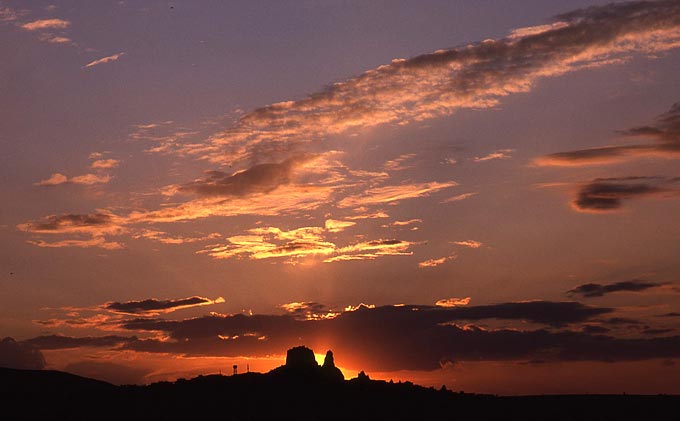 Uchisar against a spectacular sunset. | 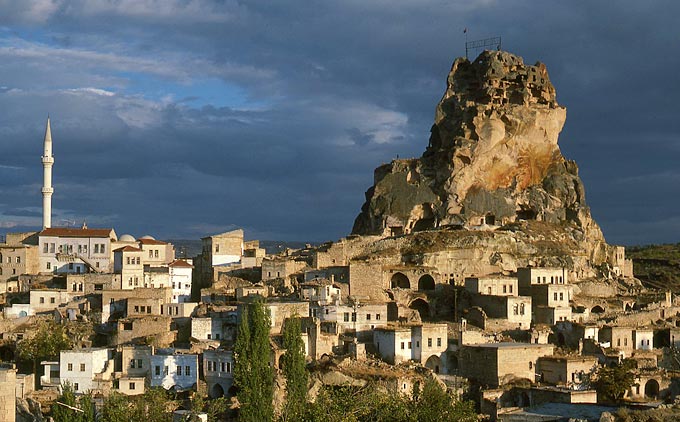 The peak of Uchisar is a maze of rooms. | 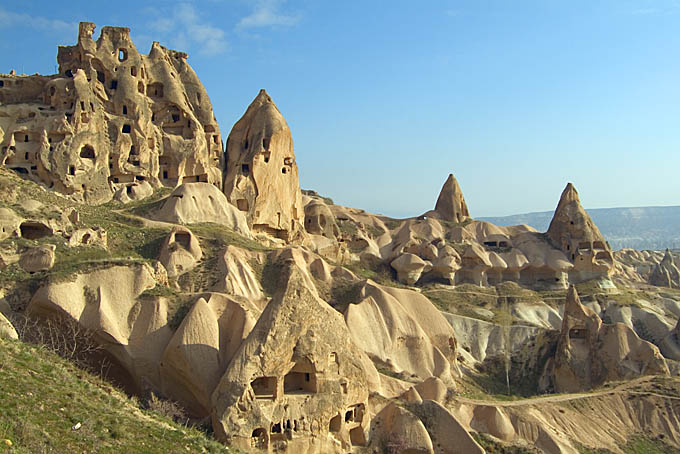 Each of these peaks is an independent house. | 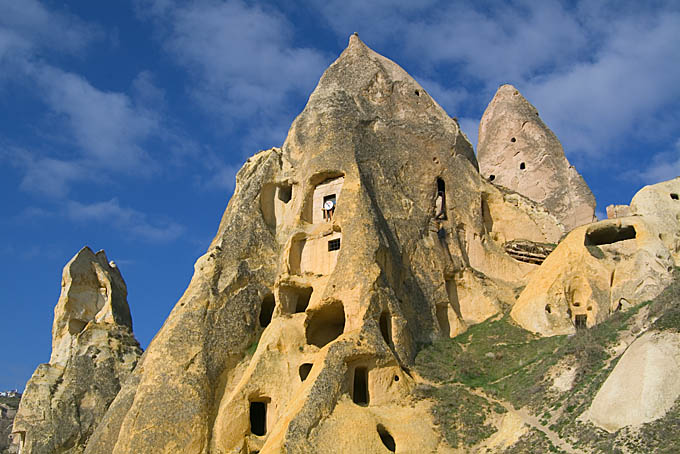 Doors, windows and balconies of a complex home. |
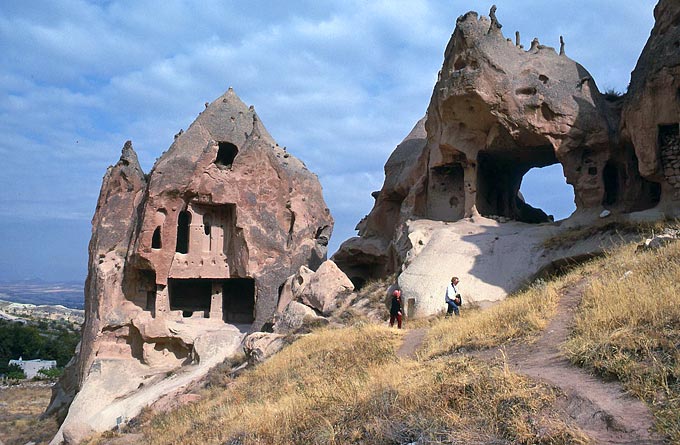 A home (left) and a cowshed (right). | 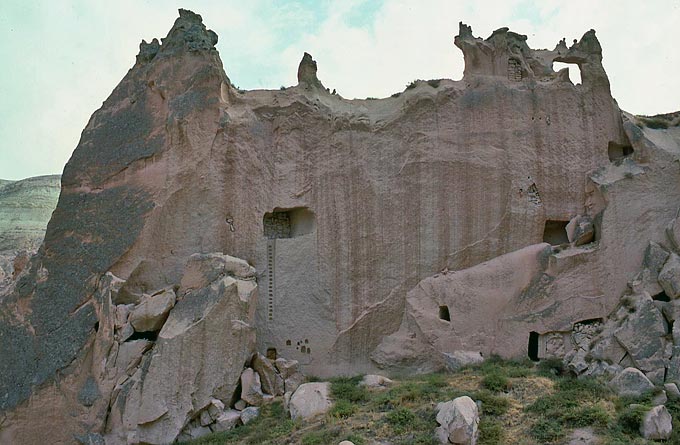 Hard life in Cappadocia: note the stairs in the wall... | 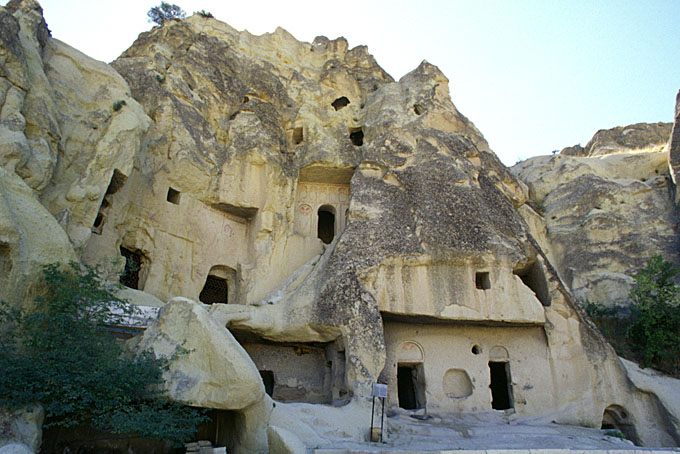 In Middle Ages some homes became Christian monasteries. | 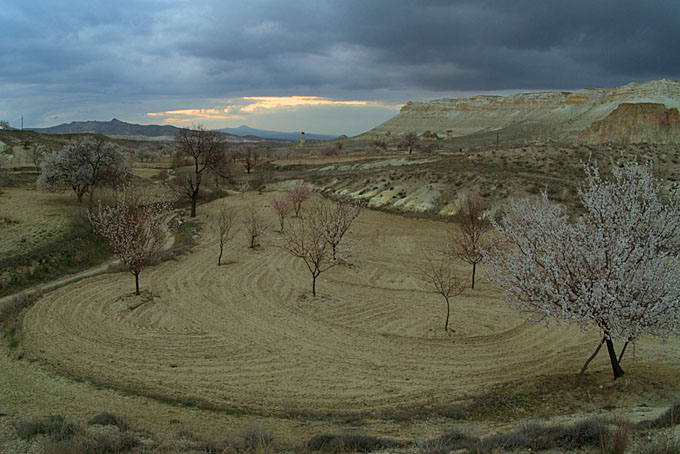 Small-scale agriculture offers some livelihood to this day. |
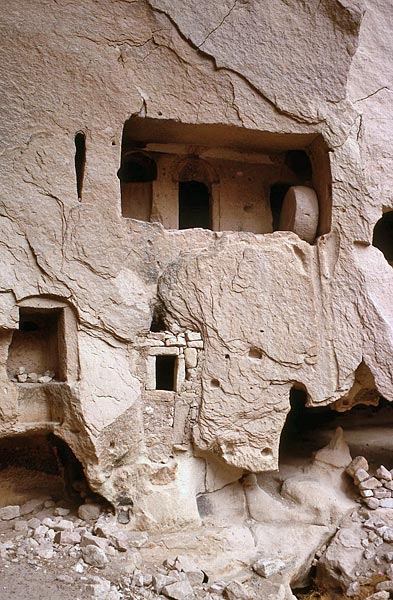 A giant olive oil press. | 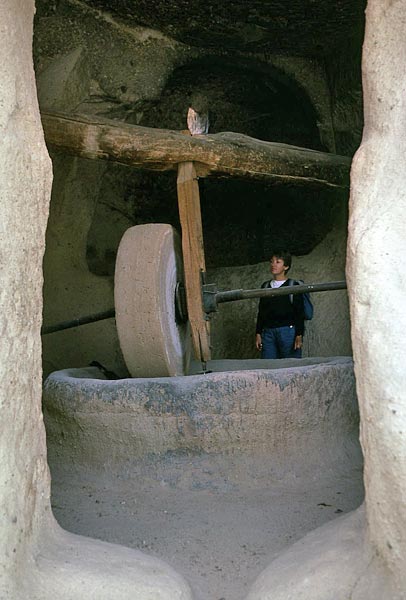 Another underground press. | 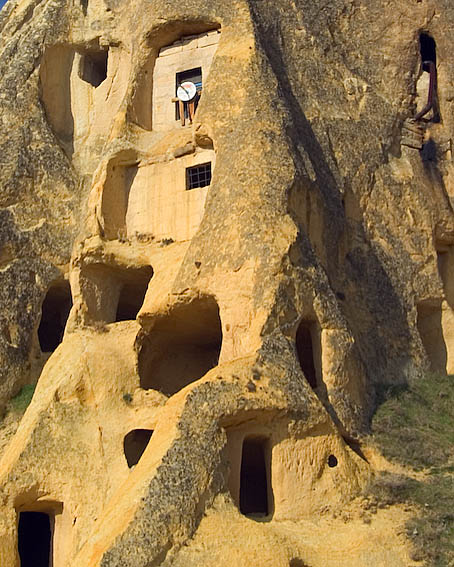 Sat-TV in the lounge window. | 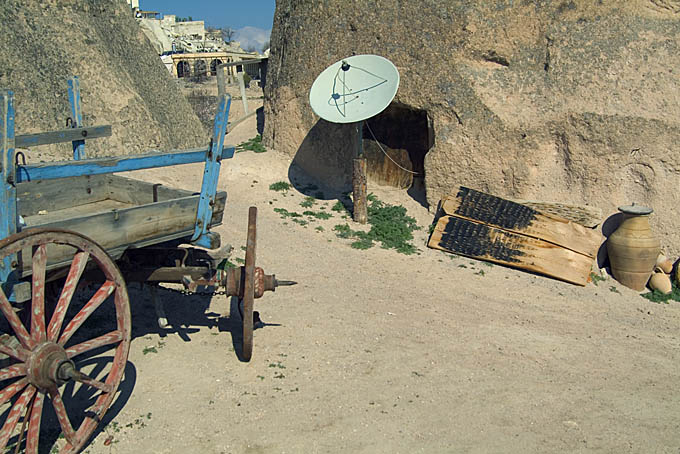 Sat-TV and farmers' tools. |
|